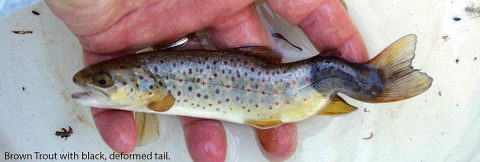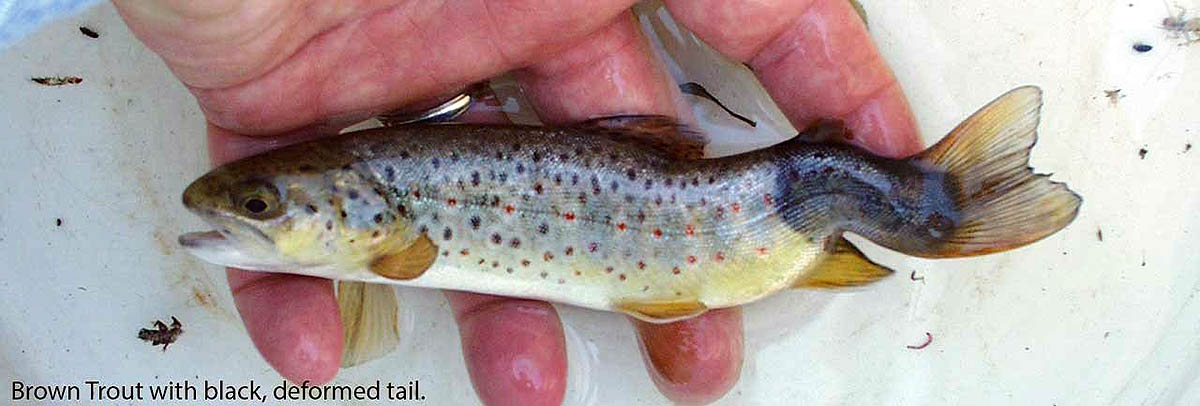 Nashville, TN – Whirling disease was recently discovered by biologists during their annual trout population monitoring in the South Holston and Watauga tailwaters. The discovery is the first known occurrence of this disease in Tennessee.
Nashville, TN – Whirling disease was recently discovered by biologists during their annual trout population monitoring in the South Holston and Watauga tailwaters. The discovery is the first known occurrence of this disease in Tennessee.
Whirling disease, a condition caused by a non-native microscopic parasite, affects fish in the trout and salmon family, including rainbow, brook, and brown trout. This parasite can cause damage to the fish’s cartilage and skeletal tissue, resulting in deformities in the head and spine. They may also develop a black tail, or display “whirling” or erratic tail-chasing behavior.

Although a diseased trout may not die directly from the parasite, it can affect the ability for them swim, eat, and escape predators. Other organisms, such as humans, mammals, pets, or other fishes like bass, catfish and perch cannot become infected.
“So far, there has been no indication of negative impacts of whirling disease in the South Holston and Watauga tailwater trout populations,” said Sally Petre, Tennessee Wildlife Resources Agency Region IV Trout Biologist. “Although the infected trout were collected in the South Holston and Watauga tailwaters, the more immediate concern is the spread of whirling disease to areas that may be more vulnerable such as wild trout streams.”
Petre explains that those impacts can be dependent on water temperature, habitat, and the age and species of trout present.
“Brown trout rarely display symptoms associated with whirling disease unless heavily infested, while rainbow and brook trout, especially young fingerlings, are more susceptible to the effects of the parasite.”
TWRA biologists will begin collecting trout in tailwaters across the state and within the South Holston and Watauga watersheds to determine the current distribution of the non-native parasite and the prevalence of whirling disease. Annual routine testing currently indicate that all TWRA hatchery facilities are disease free.
There is no known cure to rid the parasite that causes whirling disease now that it has been established, so the best way to protect Tennessee’s many trout fisheries is to prevent it from spreading.
For more information on whirling disease and how to can help, visit: www.tn.gov/content/tn/twra/fishing/whirling-disease.html



